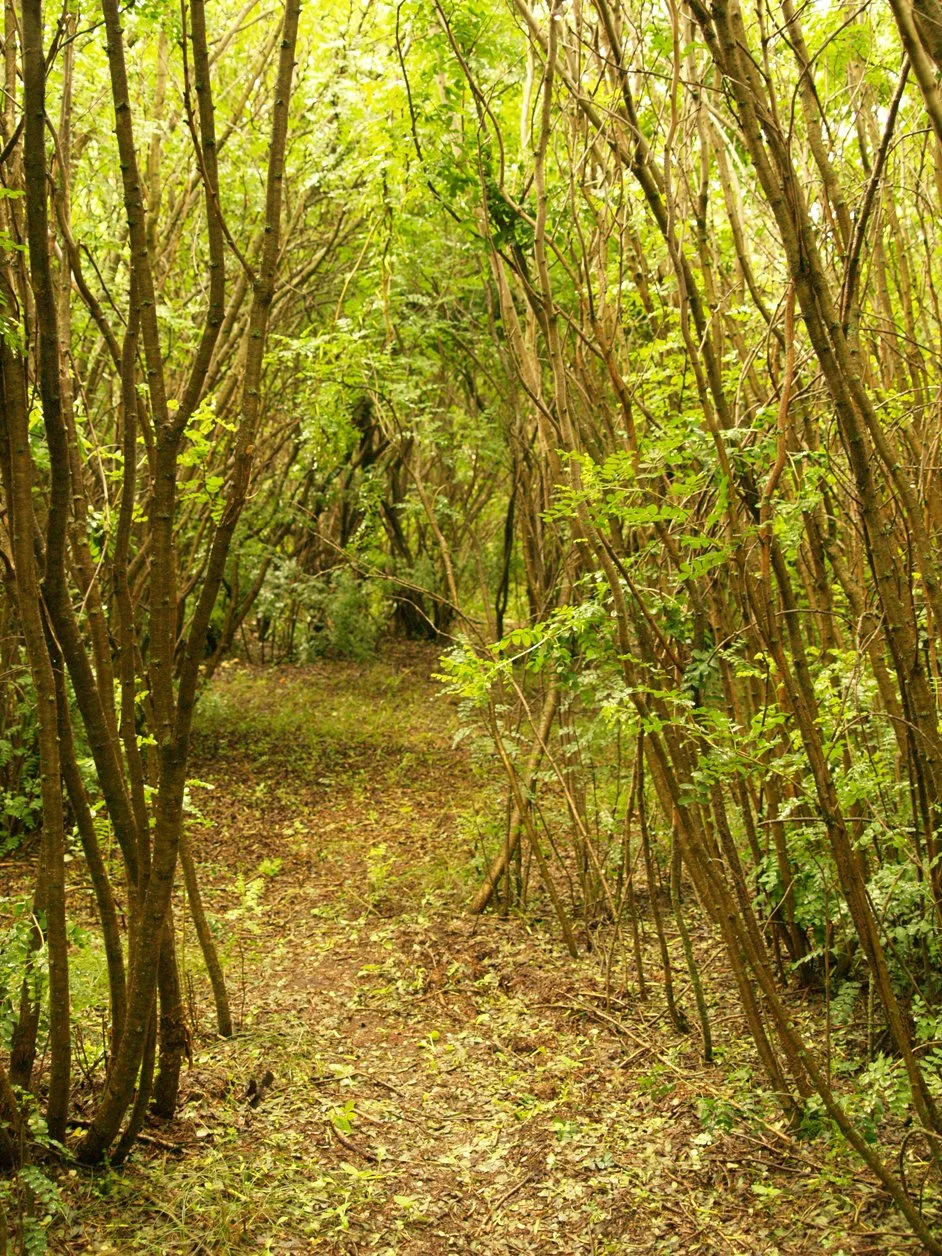
Make:Believe
Make=Believe is an ongoing project, begun in 2011. I foresee my engagement with this project lasting many years. It is a project and a place rich with learning.
This work was conceived as a series of living structures of various sizes, made from shrubs and trees already growing on site; principally, these are caragana trees (Siberian Pea-shrub). This hardy perennial was brought to the Prairies by Ukranian and Russian Settlers, coming to Canada for homesteads at the end of the 19th/early 20th centuries.
The installation consists of several essentially circular structures, connected by covered paths/tunnels, and each space has one or more apertures for ingress/egress. The living plants are woven into one another, and grow over time to form enclosed spaces.
The largest of these structures is useable as a shelter for humans – as many as 4 people could sleep comfortably within it. These spaces are also used by animals for shelter and movement across the land (a thought which gives me great pleasure).
Make=Believe has been an opportunity to strip down my way of working – to set very clear limits on what materials and level of intervention I would allow myself on the land. I wanted to make sure that the work accounted for (and did as little damage as possible to) the ecosystem or the various forms of living things that would engage with it or be a part of it. I feel the need to work in this way very strongly; growing up and living in a place shaped by the oil industry, intensive farming, and urban sprawl, I need to make work that acknowledges the land and its denizens as collaborators rather than tools to be bent to my will.
For me, this was an opportunity to understand all kinds of different, detailed connections between space and place and history and ideas of authority that can be easily overlooked. The stories are there, but only if we pay close attention and work gently.
Much has transpired between when the project started and now (the end of 2024), not the least of which being that my decade+ engagement with this place and these trees formed the basis of research for my MFA at Memorial University of Newfoundland & Labrador, which I received in early 2023.
The project has deepened, as these things do.
Very much so: work, contemplation, and research have lead me to an interrogation of my relationship to this little spot on the map in relation to living within (and benefitting from) the ongoing structures of Settler-Colonialism that have shaped the land and that inform the dominant narratives regarding the land and our place on it (not with it or in it). Jannie and I have been looking at the history of the homestead and those who broke ground here, and I have been immersed in archival maps, field notebooks, and much thought-provoking writing coming out of the field of Settler-Colonial studies. Rich ground, this – for starting to untangle the responsibility and complicity settler such as myself must address and act upon in relation to our relations with the places we call “ours” or are otherwise attached to as part of our being.
This deep dive has also spurred a good deal of writing on my part – which is a long-overdue union/reunion of my visual arts practice and my writing.
See 40 Chains a Side for the results of my MFA Research and the exhibition arising from it.
See below for a collaborative writing project that came out of this long, physical meditation on place and being - published by Collusion Books, co-written with my dear friend Jannie Edwards.












Learning Their Names: Letters from the Home Place
This lovely chapbook cover is courtesy Andy Verboom at Collusion Books, who has done a fantastic job of putting together this collaborative project.
There are many crossings-over and interweaving between this writing and the creation-research project 40 Chains a Side that I have been developing for my MFA these last (nearly) two years. The Letters have been another way in, another way to process what I have learned – about ongoing and historical settler-colonial harms, and the responsibilities settlers have within this still-dominant, still-destructive system of relations.
Hard work.
Heart work.
